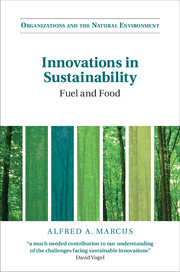Book contents
- Frontmatter
- Dedication
- Contents
- List of figure and tables
- Foreword
- Acknowledgments
- Introduction the path to sustainability
- Part I Funding sustainable startups
- Part II Business models
- 3 Follow the sun: First Solar and Suntech
- 4 Making a revolution: Tesla and Better Place
- Part III The macroenvironment and industry context
- Part IV Finding customers
- Part V Competition between mission and non-mission based businesses
- Concluding observations: the journey continues
- Index
4 - Making a revolution: Tesla and Better Place
from Part II - Business models
Published online by Cambridge University Press: 05 August 2015
- Frontmatter
- Dedication
- Contents
- List of figure and tables
- Foreword
- Acknowledgments
- Introduction the path to sustainability
- Part I Funding sustainable startups
- Part II Business models
- 3 Follow the sun: First Solar and Suntech
- 4 Making a revolution: Tesla and Better Place
- Part III The macroenvironment and industry context
- Part IV Finding customers
- Part V Competition between mission and non-mission based businesses
- Concluding observations: the journey continues
- Index
Summary
Shai Agassi, Better Place's charismatic founder, was trying to make a revolution. At a 2009 TED Conference, he declared that converting to electric cars was the moral equivalent of abolishing slavery. He maintained that, like going to the moon, anything short of fully achieving this objective was a failure. Moving to electric would start a new industrial revolution.
The same revolutionary fervor, perhaps expressed with less hyperbole, came from Tesla's equally if not more charismatic founder, Elon Musk. His celebrated 2006 blog “The secret Tesla Motors master plan (just between you and me)” said that Tesla's “overarching purpose” was to “expedite the move” from a “mine-and-burn hydrocarbon economy” toward the main sustainable solution, a solar electric economy. To accomplish this goal, Tesla's business model was to enter the high end of the automotive market, where customers were prepared to pay a premium, and to move down the market as fast as possible to higher unit volume and lower prices with each successive model.
Tesla's business model was to:
1. Build a sports car.
2. Use that money to build an affordable car.
3. Use that money to build an even more affordable car.
It cost Tesla an estimated $60,000 to build the second-generation Model S. Its aim was that its third-generation Model E, due sometime in 2017, would have a base price of $35,000 excluding any tax credit. It would have a 200-mile (322-km) battery range and it would generate an average gross margin of 15 percent.
The question was how Tesla could reduce the cost of producing the Model E to under $30,000. The Model S battery reputedly cost $15,000. A smaller battery manufactured at scale in Tesla's proposed large-scale battery factory could be priced no lower than $10,000 (see Table 4.1).
- Type
- Chapter
- Information
- Innovations in SustainabilityFuel and Food, pp. 110 - 144Publisher: Cambridge University PressPrint publication year: 2015



